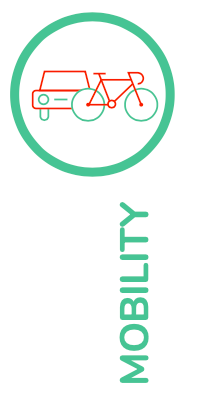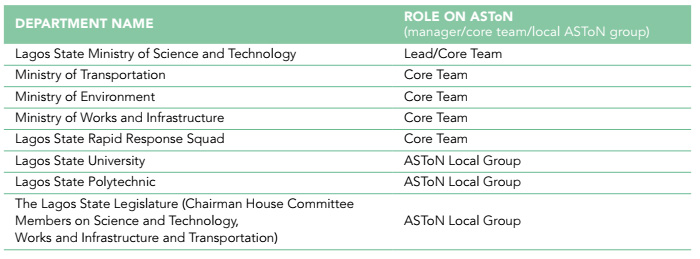Mobility
Focus area for ASToN
 Lagos’ chosen theme is Mobility
Lagos’ chosen theme is Mobility
Lagos faces some of the worst traffic congestion in the world. About 2 million people can be moving around the city at any one time, which puts significant constraints on activities within the city, as well as impinging on economic growth. Over-reliance on cars is also causing serious social and environmental challenges.
Public transport is increasingly being looked at to relieve these pressures. Its use is led by the Ministry of Transportation and the Lagos Metropolitan Area Transport Authority (LAMATA), which is currently implementing a transportation master plan for the state. However, the development of public transport is hampered by lack of data on transport within Lagos; for example, the number of informal minibus taxis that exist within the city, which could be phased out by high-capacity public buses. Citizens would also benefit from knowing more about public transport, especially its availability and timing. Lack of data on the transport sector is therefore a key problem that LASG wishes to address.
Findings: the starting point for addressing these problems
The following findings set out the starting point for Lagos as they work to address data for public transport. Based on research conducted over the course of Phase 1, they describe the interlinked strengths and challenges that need to be taken into account.
Congestion and traffic management is a defining issue for Lagos
The pace of urbanisation seen in Lagos has contributed to increasing congestion and the need for high capacity public transport which has not been met. There is inadequate transport infrastructure in the city that is put under increasing strain.
Transport is a priority for Lagos State
Work has already been made to improve the transport sector of Lagos on multiple fronts. Traffic management is a priority area, as evidenced by the creation of new transport agencies and improvements in traffic enforcement. The expansion of the road network in Lagos, a new bus terminus, and larger bus fleet with automatic fare collection, have also been introduced.
Relevant experience and expertise will bolster the work
Lagos has a good track record of conducting digital projects, technical expertise across its ministries, departments and agencies, and a digital base to build from. The metro fibre backbone project underway also offers a real opportunity for Lagos to implement projects that use real-time data.
Lack of data collection and analysis could limit ability to reach goals
Lagos does not have an integrated database across the smart technology projects, and has limited capacity to gather and store data. In order to fully reach the goals of digital transformation, it will be important to consider what to prioritise and where to focus efforts.
Government support is not matched by funding support
While there is strong government support for digital solutions to public transport problems, it appears that there is low funding available. Nevertheless, the LASG has observed increased investor confidence in the city and its administration in recent times that could be capitalised.
Changes in the sector must consider those that will lose out
The development of public transport systems should consider the role of the informal sector and the indirect consequences of project implementation. Additionally, since there is high-reliance on the road network in Lagos, digital solutions should try and fit seamlessly within existing activities or be introduced in a way that minimises unnecessary disruption.
Next steps
There is strong political will for the ASToN Local Action Plan to complement existing strategies for LASG. For example, the Lagos State Governor has taken traffic management and transport as one of the priority areas in his ‘THEMES’ agenda.
Additionally, Lagos State has a desire to establish better project milestones and timeline management. It is hoped that the ASToN Local Action Plan can help in this respect.
Departments of the local authority involved in the project

Stakeholders involved in the ASToN Local Group

Participating in the ASToN network



